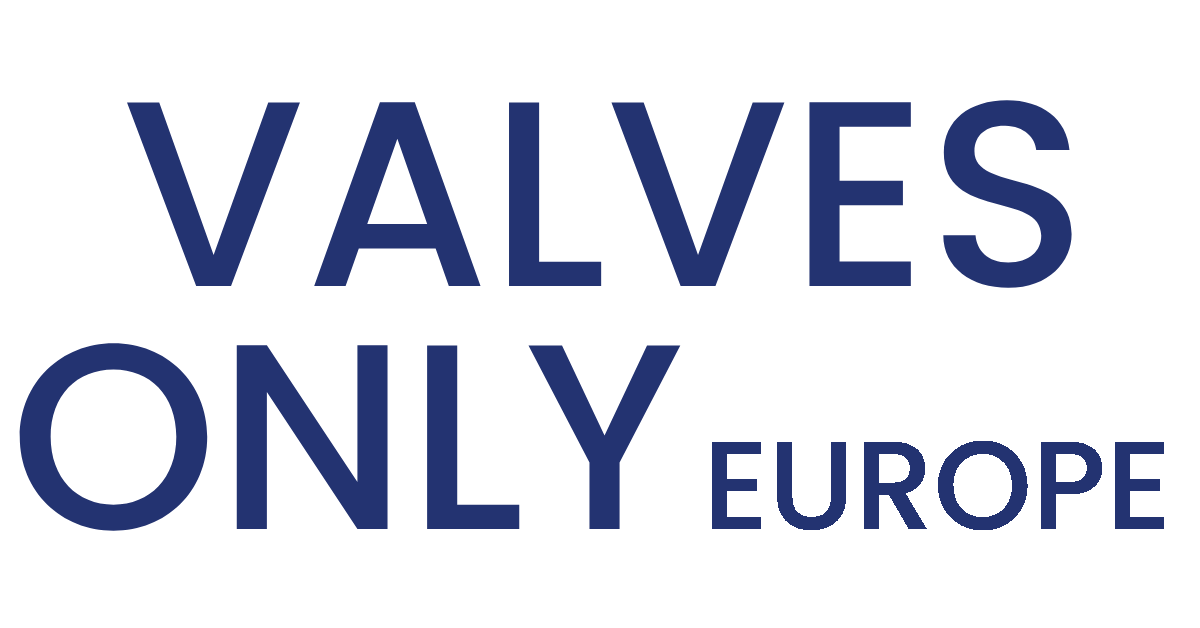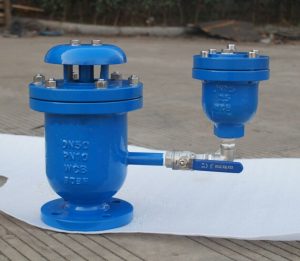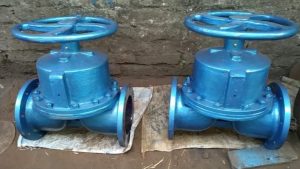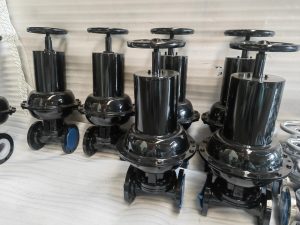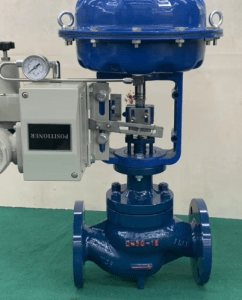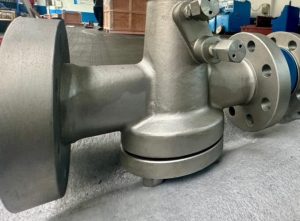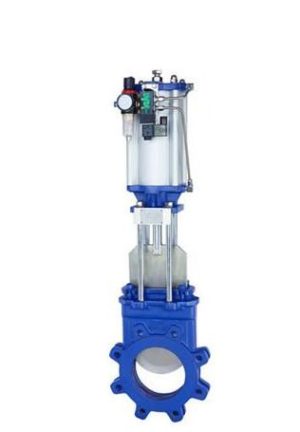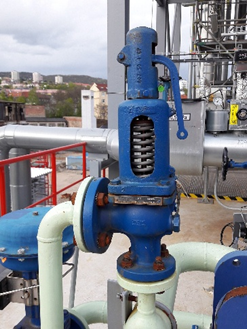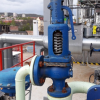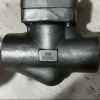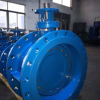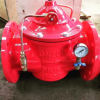We deliver to you every day from 7:00 to 23:00
What is a Safety Valve? Types, Working & Applications
Safety in pressurized systems cannot be sacrificed, particularly in sectors like the oil & gas, chemical process, and power generation industry. One of the most critical components that guarantee such safety is the safety valve. It is a fail-safe device utilized to safeguard life, equipment, and the environment from the risks of excessive pressure.
In this blog, we are going to talk about what a safety valve is, where it is used, its categories, how it works, its benefits, and why you need Valves Only Europe to be your industrial valve solution partner.
What is a Safety Valve?
A safety valve is an automatic mechanical device that allows release of material (usually gas or steam) from a boiler, pressure vessel, or pipeline if the pressure or temperature rises above set limits. Its sole purpose is to avoid equipment breakdown or explosion by relieving excess pressure.
Safety valves are very crucial in conditions where pressure accumulates, resulting in catastrophic consequences, and they normally act as an ultimate one as a last alternative in conditions when other control mechanisms lose efficiency.
Safety Valve Working Mechanism:
The mechanism of how a safety valve works is through the equilibrium of system force and internal spring force in the valve.
Here is how it works
- Normal Conditions: Spring-loaded disc or poppet is seated on the valve seat, closing it.
- Overpressure: If the system pressure is higher than the spring pressure, the valve opens.
- Pressure Relief: The pressure in excess is relieved until the pressure within the system goes down to safe values.
- Resetting: The spring seats the disc into the seat, and the valve closes.
The whole process is immediate and automatic and provides immediate protection against hazardous pressure surges.
Safety Valve Functions:
- Overpressure Protection: Shields against system explosion or damage by internal pressure overpressure.
- System Integrity: Preserves the pressure balance to sustain stable processes.
- Life Safety: Shields human operators and surrounding infrastructure.
- Environmental Safety: Avoids dangerous leaks and emissions into the environment.
- Equipment Longevity: Avoids wear and possible failure of pressure-containing equipment.
Safety Valve Types:
1. Spring-Loaded Safety Valve
- Most commonly used type.
- Operates using a spring to close the valve until set pressure is reached.
- Optimal for pressure vessels, boilers, and compressed air systems.
2. Pilot-Operated Safety Valve
- Utilizes system pressure to power the main valve.
- Has tighter closure and less leakage.
- The one generally preferred in high-pressure and high-capacity systems.
3. Bellow Seal Safety Valve
- Utilizes a bellows assembly to provide a balancing back pressure.
- Works particularly well in systems where back pressure varies.
- Utilizes weights instead of springs.
- Used in low-pressure steam boilers and old equipment.
- Seldom used today because of space and maintenance limitations.
- Operates by thermal expansion of liquids trapped within.
- Critical in pipelines with shut-off valves due to liquid expansion leading to rupture.
Safety Valve Advantages:
- Instantaneous Pressure Relief: Responds instantly to pressure increase.
- Passive Protection: Operates without power or signal input.
- Reliable Operation: Excellent reliability with low failure rate.
- Low Maintenance: Low complexity with long-term build.
- Universal Application: May be applied on gas, steam, and liquid service.
- Cost-Effective Safety: Avoids significant losses in case of hypothetical equipment malfunction.
Differences Between Safety Valve Types
| Feature | Spring-Loaded Valve | Pilot-Operated Valve | Bellows Safety Valve | Thermal Safety Valve |
| Mechanism | Direct spring action | Pilot and main valve | Spring + bellows | Temperature-based |
| Back Pressure Sensitivity | Moderate | Low | Compensated | Not applicable |
| Capacity | Moderate to high | Very high | Moderate | Low |
| Application | Boilers, air systems | Refineries, gas lines | Variable back pressure | Pipelines |
Safety Valve Applications:
Safety valves are used in various industries, such as:
- Power Plants: In steam boiler and turbine protection.
- Oil & Gas Refineries: In pressure vessel, heat exchanger, and pipeline applications.
- Chemical and Petrochemical Plants: For control of reactive and volatile chemicals.
- HVAC Systems: Hot water heating systems and chillers.
- Marine Applications: Shipboard high-pressure systems and onboard boilers.
Why Are Safety Valves Mandatory in Pressure Systems?
Government regulatory authorities like ASME, PED (Pressure Equipment Directive), and API require the use of safety valves in pressure-contained systems. Without safety valves, systems are at risk of:
- Over-pressurized boiler explosions
- Equipment failure and production downtime
- Regulatory penalties and safety violations
- Human mistakes and nature’s wrath
- Essentially, a safety valve is a compact gadget with an immense responsibility.
Why Valves Only Europe?
We, at Valves Only Europe, know the value of reliability and quality in pressure protection.
What We Provide:
- High-Class Materials: Our safety valves are made of high-grade stainless steel, carbon steel, and specialty alloys.
- Worldwide Certifications: ASME, DIN, API, and EN compliant.
- Broader Range: In broader sizes, pressure classes, and connection types (flanged, threaded, welded).
- Engineering Expertise: Expert assistance for choosing the correct valve for your system from our engineers.
- Custom Solutions: Special safety valves for unique or specific uses.
- Competitive Pricing: High-quality valves at competitive prices.
- Quick Delivery Throughout Europe: Distribution centres located for effective logistics and rapid delivery.
Whatever use you have in a refinery, power plant, or processing plant, our safety valves make your system operate safely and efficiently.
Conclusion:
Pressure relief devices that they may be, safety valves are far more—they are an integral part of the defence system of any high-pressure system. Ranging from basic spring-loaded types to complex pilot-operated types, these valves offer automatic fail-safe protection against pressure surges.
Valves Only Europe offers a wide range of safety valves that are engineered to meet the requirements of the industries of today, ensuring compliance, safety, and peace of mind. Choose us for precision-engineered, certified, and dependable solutions tailored to your needs.
Recent Posts
- Understanding Valve End Connections – Flanged, Threaded, Socket Weld and Butt Weld
- How to Prevent Backflow: The Role of Check Valves in Industrial Systems
- Gate Valve vs Ball Valve – Pressure Drop, Flow Control & Maintenance Compared
- Floating vs Trunnion Ball Valves : Material Benefits for Corrosive Applications
- What is a Pressure Reducing Valve? Function, Types & Uses
